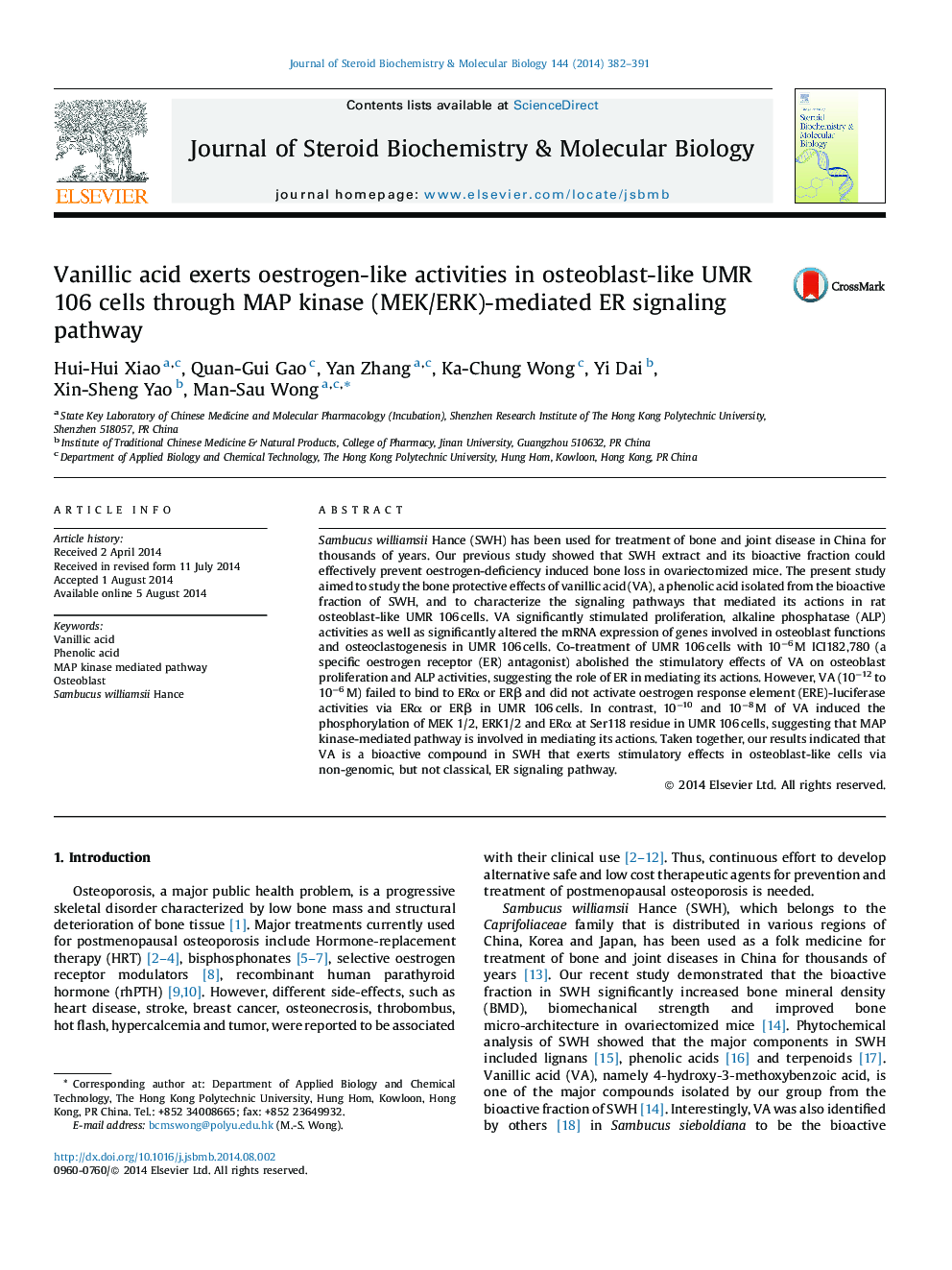| Article ID | Journal | Published Year | Pages | File Type |
|---|---|---|---|---|
| 8338400 | The Journal of Steroid Biochemistry and Molecular Biology | 2014 | 10 Pages |
Abstract
Sambucus williamsii Hance (SWH) has been used for treatment of bone and joint disease in China for thousands of years. Our previous study showed that SWH extract and its bioactive fraction could effectively prevent oestrogen-deficiency induced bone loss in ovariectomized mice. The present study aimed to study the bone protective effects of vanillic acid (VA), a phenolic acid isolated from the bioactive fraction of SWH, and to characterize the signaling pathways that mediated its actions in rat osteoblast-like UMR 106âcells. VA significantly stimulated proliferation, alkaline phosphatase (ALP) activities as well as significantly altered the mRNA expression of genes involved in osteoblast functions and osteoclastogenesis in UMR 106âcells. Co-treatment of UMR 106âcells with 10â6 M ICI182,780 (a specific oestrogen receptor (ER) antagonist) abolished the stimulatory effects of VA on osteoblast proliferation and ALP activities, suggesting the role of ER in mediating its actions. However, VA (10â12 to 10â6 M) failed to bind to ERα or ERβ and did not activate oestrogen response element (ERE)-luciferase activities via ERα or ERβ in UMR 106âcells. In contrast, 10â10 and 10â8 M of VA induced the phosphorylation of MEK 1/2, ERK1/2 and ERα at Ser118 residue in UMR 106âcells, suggesting that MAP kinase-mediated pathway is involved in mediating its actions. Taken together, our results indicated that VA is a bioactive compound in SWH that exerts stimulatory effects in osteoblast-like cells via non-genomic, but not classical, ER signaling pathway.
Keywords
Related Topics
Life Sciences
Biochemistry, Genetics and Molecular Biology
Biochemistry
Authors
Hui-Hui Xiao, Quan-Gui Gao, Yan Zhang, Ka-Chung Wong, Yi Dai, Xin-Sheng Yao, Man-Sau Wong,
